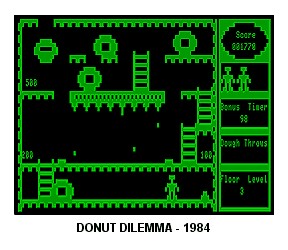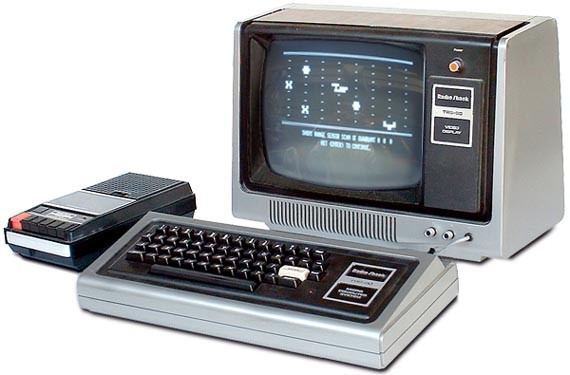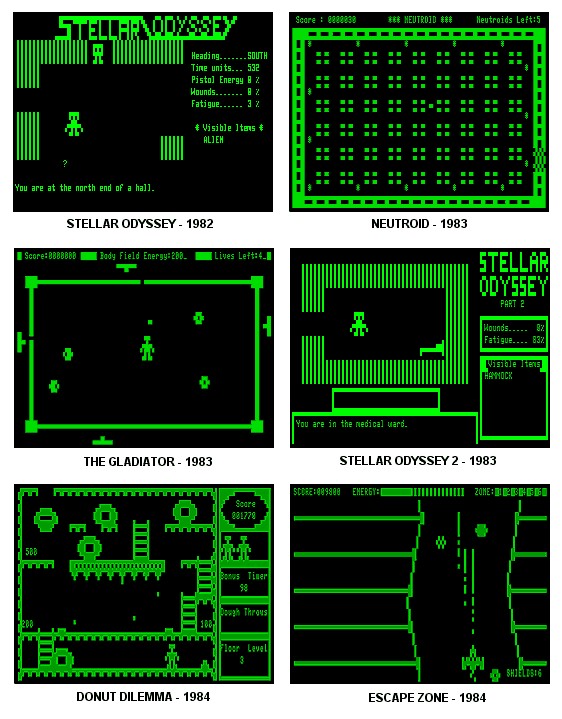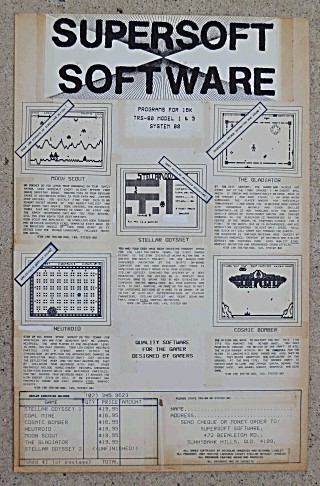
I purchased my first computer back in the Christmas of 1980. A Tandy/Radio Shack TRS-80 Model 1. This computer came with 16K of RAM, which I upgraded internally to 32K. It used an 8 bit Z-80 processor running at 1.78Mhz and had a monochrome graphics capability of 128 x 48 pixels. It had no official sound circuit but users could generate sound by toggling the cassette output port at varying speeds to create square wave tones.

Tandy/Radio Shack TRS-80 Model 1
There was an optional expansion interface available for it that would allow 5.25” floppy disk drives to be attached but this was expensive and out of reach for a high school kid like me at the time. I instead used a cassette player to store and retrieve data as was the case with many systems of the time. This method of data storage was slow and notoriously unreliable.
This system is quite a contrast compared to today’s hardware but everything is relative and at the time, I thought I had myself an absolutely “kick-arse” system.
I began to learn BASIC programming and soon became very proficient at creating games. It didn’t take long before I realized that BASIC was too slow for the creation of arcade action type games and set my sites learning to program in Assembly Language.
INSPIRATION
The TRS-80 had many great games developed by that point and the ones that stood out the most to me were from an American software company called ‘Big 5’. Their games were arcade quality despite the computer having low resolution monochrome graphics. I would marvel at the attention to detail the programmer showed and the polished presentation of their games. I looked at their games in awe, mesmerised by the craftsmanship of the programmer.
From that day, I set my sites on learning how to create games of a similar commercial calibre. It became my dream to establish a software company, selling my games all over the world and become rich in the process! (Insert evil laugh here)
Quite ambitious for a kid still in high school but I was young and perceived no boundaries.
Before I could conquer the games world though, I knew I had to achieve that level of quality in order to cut it into the big league and so I set forth on my mission to create great games for the TRS-80! I created several games over the next few years each getting better with every attempt.

Great Games for the TRS80
I registered a business name of ‘Supersoft Software’ and created a software catalogue that I posted out to customers of my games. I developed skills in game packaging by creating my own artwork and wrapped the artwork, instruction sheets and cassette tape into click seal plastic bags. I was effectively managing a small cottage software company from the confines of my bedroom… while still flunking school. Who needs school anyway? I was going to be a successful games software company!

Homemade Software Catalogue for Supersoft
Most of my customers were people I met at user groups where I demonstrated my games. Some I sold through a tobacconist who also sold TRS-80 software as a hobby sideline. I also created a monthly newsletter to send out to my customers.
I was a bedroom programmer like many others who shared this dream in the early 80’s and I loved it!
But sales were not at a level I could classify as an income, more like pocket money. Without major advertising investment and connections with the big US market, I soon realised that I was going nowhere in the long term.
The TRS-80 was starting to show its age by 1985 and the games market by then for the old TRS-80 was almost over. All the new computers that were being released at the time had high resolution colour graphics and superior sound capabilities.
By late 1984, I migrated to the Tandy Colour Computer and achieved some moderate success… but this is a story for another blog episode.
WAS IT WORTHWHILE?
Looking back at my achievements, I did create commercial quality games, I did create a software company and I did eventually sell my games around the world.
Unfortunately, I am still waiting to become rich. (Insert groan here)
I was only a kid with no job and no money to invest. The real market was in the US and with no internet at that time, it was very difficult to forge into new market arenas.
When I did finish school, I immediately got a job which diverted much of my energy away from my games development inspirations. Later, major life changes such as marriage and kids meant that games programming had become just a hobby.
Computers moved on and I was left behind.
I continue to program games as a hobby on my original 1980’s Tandy Colour Computer 3 and currently I am developing a new game just for fun which you can read about on my blog at…
http://www.members.optusnet.com.au/nickma/PopstarPilot/
I’ve enjoyed creating games over the last 30 years and can take pride in what I have created, giving happiness and joy to many TRS-80 users around the world.

need contact for live my trs 80 i best conditions on your help widh software . . . best regards and thanks
darko radicevic
stepa vojvoda street
32000 cacak
sr ,,, europe